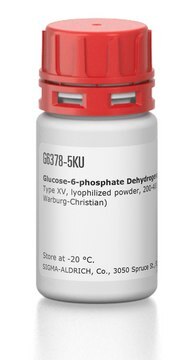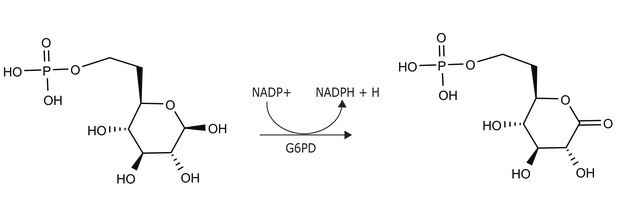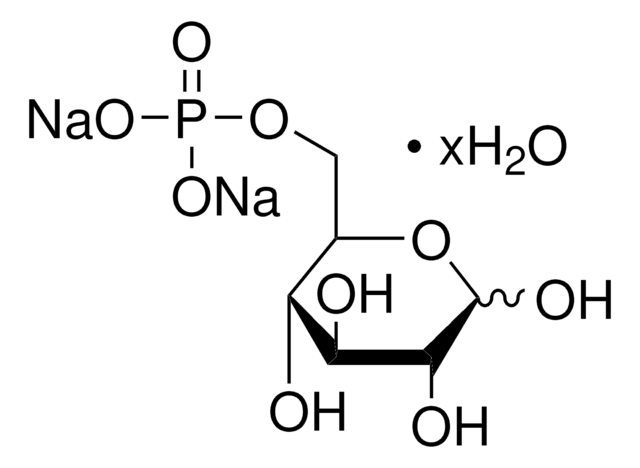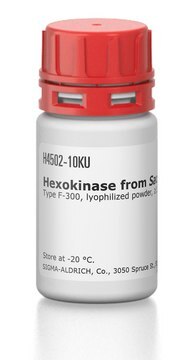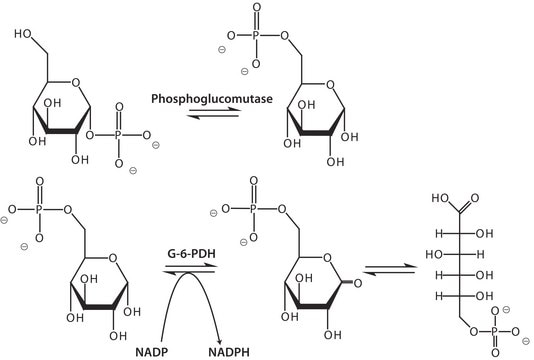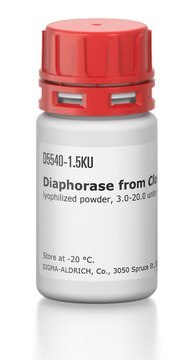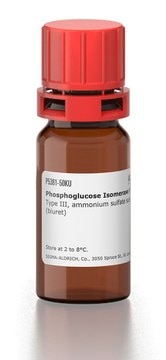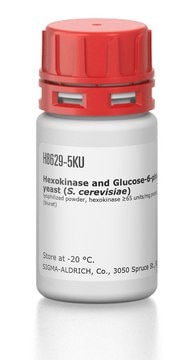G8404
Glucose-6-phosphate Dehydrogenase from Leuconostoc mesenteroides
recombinant, expressed in E. coli, ammonium sulfate suspension, ≥550 units/mg protein (biuret)
Synonym(s):
Entner-Doudoroff enzyme, G6PD, G6PDH, NADP glucose 6-phosphate dehydrogenase, G-6-P-DH
About This Item
Recommended Products
biological source
bacterial (Leuconostoc mesenteroides)
Quality Level
recombinant
expressed in E. coli
form
ammonium sulfate suspension
specific activity
≥550 units/mg protein (biuret)
mol wt
128 kDa
storage condition
(Tightly closed)
technique(s)
cell culture | mammalian: suitable
UniProt accession no.
foreign activity
creatine phosphokinase, glutathione reductase, myokinase, NADH oxidase, NADPH oxidase, phosphoglucomutase, 6-phosphogluconic dehydrogenase, phosphoglucose isomerase, lactic dehydrogenase, hexokinase ≤0.01%
storage temp.
2-8°C
Looking for similar products? Visit Product Comparison Guide
General description
Research area: Cell Signaling
Application
- to test ketose reductase activity in developing maize endosperm.
- to determine the levels of mannose in coronary heart disease patient-derived serum
- to study its activity on extracellular polymeric substance (EPS) extract to determine cell lysis through sonication
- to determine the glucose uptake in cultured human muscle satellite cells
Biochem/physiol Actions
Unit Definition
Physical form
Storage Class
12 - Non Combustible Liquids
wgk_germany
WGK 2
flash_point_f
Not applicable
flash_point_c
Not applicable
ppe
Eyeshields, Gloves, type ABEK (EN14387) respirator filter
Certificates of Analysis (COA)
Search for Certificates of Analysis (COA) by entering the products Lot/Batch Number. Lot and Batch Numbers can be found on a product’s label following the words ‘Lot’ or ‘Batch’.
Already Own This Product?
Find documentation for the products that you have recently purchased in the Document Library.
Customers Also Viewed
Articles
Instructions for working with enzymes supplied as ammonium sulfate suspensions
Protocols
Enzymatic Assay of Glucose-6-Phosphate Dehydrogenase (EC 1.1.1.49)
Our team of scientists has experience in all areas of research including Life Science, Material Science, Chemical Synthesis, Chromatography, Analytical and many others.
Contact Technical Service